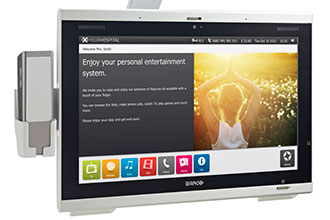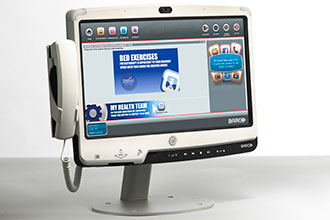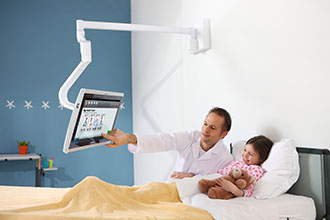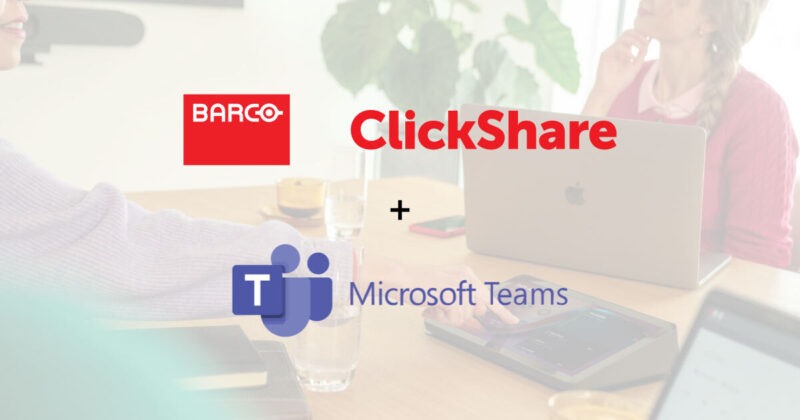Hospitals Look to Patient Engagement to Meet Healthcare Delivery Challenges
By Stephane Willaert
Vice President Strategic Marketing, Healthcare IT Solutions for Barco
 Today’s hospitals are facing a sea change in the healthcare industry as a result of increasing pressures to deliver quality care to millions of newly insured patients gaining access under the new Affordable Care Act. Compounding the problem is the need to keep a tighter rein on costs as reimbursements are expected to continue their decline for many services. The challenge to do more with less has never been greater for hospitals, which must stay focused on their top priorities: patient safety, quality of care, patient experience and satisfaction and cost reduction.
Today’s hospitals are facing a sea change in the healthcare industry as a result of increasing pressures to deliver quality care to millions of newly insured patients gaining access under the new Affordable Care Act. Compounding the problem is the need to keep a tighter rein on costs as reimbursements are expected to continue their decline for many services. The challenge to do more with less has never been greater for hospitals, which must stay focused on their top priorities: patient safety, quality of care, patient experience and satisfaction and cost reduction.
Fortunately, the market is responding with interactive patient care aka “patient engagement” solutions that enable hospitals to manage clinical information and tasks, while providing a robust entertainment portal, right at the patient bedside. The best option is a turnkey system that bundles a bedside smart terminal with patient entertainment, personalized services and clinical access software, and which ensures seamless operation and smooth connectivity within patient rooms and across the enterprise.
Typically comprising a medically designed all-in-one computer, these consoles are available in wall- and ceiling-mounted options for easy viewing and mobility. User-friendly graphic interfaces, similar to smartphone menus, make applications easily accessible via a touchscreen. Secure smart- or Radio Frequency Identification (RFID)-card access ensures that only the appropriate caregivers have access to patient information.
Connecting Quality Care from Every Perspective
 The primary objective of interactive patient care solutions is to help eliminate “solution silos” by centralizing multiple capabilities and enhanced functionality into an integrated clinical collaboration and patient engagement platform. This eliminates the need for costly redundant equipment and applications while facilitating communications between patients and their family and friends, as well as among clinicians and staff, to provide a more cohesive, patient-centric approach to care.
The primary objective of interactive patient care solutions is to help eliminate “solution silos” by centralizing multiple capabilities and enhanced functionality into an integrated clinical collaboration and patient engagement platform. This eliminates the need for costly redundant equipment and applications while facilitating communications between patients and their family and friends, as well as among clinicians and staff, to provide a more cohesive, patient-centric approach to care.
Each constituency within a healthcare organization has specific needs and issues that must be addressed in order to fulfill this objective:
Clinicians
Physicians require simple, streamlined clinical access that enables them to enter orders directly into a networked, interactive patient care system as well as view PACS (x-ray, MRI, etc.) images at the patient bedside. Nurses and medical staff also need more efficient ways to chart and administer medication at the point of care, as well as share essential healthcare educational materials with patients throughout their treatment and recovery to help them fully participate in their own positive recovery. All of these efficiencies result in the ability for medical personnel to more effectively deliver a higher level of service to patients.
Patient engagement solutions can greatly improve clinician’s performance by automating many aspects of patient care, allowing clinicians and staff to focus more time on patient care and less on administration. The ability to directly input data into a centralized information repository right at the patient bedside in real-time also results in fewer errors, which greatly increases patient safety.
These improvements also enhance workflow across the healthcare organization. The benefit to the bottom line is obvious: Any time you can reduce the number of steps involved in caregiving as well as shrink the administrative task burden, you’ll increase productivity, which positively impacts the healthcare delivery organization’s profitability.
IT & Facilities
 From an information technology perspective, hospitals need a truly interoperable system that leverages the existing IT infrastructure, and which is both flexible and scalable in terms of implementation. It must enable streamlined, secure access to clinical information and facilitate regulatory auditing requirements, while offering patients easy, bedside access to entertainment, education and the internet as well as self-service room environment controls and service requests.
From an information technology perspective, hospitals need a truly interoperable system that leverages the existing IT infrastructure, and which is both flexible and scalable in terms of implementation. It must enable streamlined, secure access to clinical information and facilitate regulatory auditing requirements, while offering patients easy, bedside access to entertainment, education and the internet as well as self-service room environment controls and service requests.
Hospital Administration
One of the most critical mandates for today’s hospitals is Meaningful Use compliance. Meaningful Use is the use of certified electronic health record (EHR) technology to:
- Improve quality, safety, efficiency, and reduce health disparities
- Engage patients and family
- Improve care coordination, and population and public health
- Maintain privacy and security of patient health information
Meaningful Use sets specific objectives that hospitals must demonstrate over a three-stage, five-year implementation schedule beginning in 2011 to qualify for Centers for Medicare & Medicaid Services (CMS) Incentive Programs.
While Stage 1 (2011-2012) required healthcare delivery organizations to implement EHR and CPOE (Computerized Physician Order Entry) technologies to centralize and streamline documentation, Stage 2 is focused on patient engagement. Beginning in 2014, hospitals’ performance attainment and improvement will determine their total reimbursements under CMS, whereby they are rewarded or penalized based on the quality, not quantity, of care provided. This is measured by the self-reported patient experience using the HCAHPS (Healthcare Consumer Assessment of Hospital Providers and Systems) Survey, which is the first national, standardized and publicly reported survey of patients’ perspectives of hospital care.
Empowering Patients through Engagement
The Institute of Medicine (IOM) defines patient-centered care as providing care that is respectful of and responsive to individual patient preferences, needs, and values and ensures that patient values guide all clinical decisions. Patient-centered care supports active involvement of patients and their families in decision-making. The Affordable Care Acts also puts consumers back in charge of their healthcare, featuring a new “Patient’s Bill of Rights” that gives Americans the stability and flexibility they need to make informed choices about their health.
Meaningful Use requirements are forcing hospitals to take a hard look at the quality of care they’re delivering, and patients are clearly in the driver’s seat. All of the measures to streamline workflow and enhance clinical productivity won’t be enough if hospitals aren’t also focusing their efforts on engaging patients in ways that will measurably increase their satisfaction and improve health outcomes.
The most effective patient engagement solutions provide a wide array of entertainment options, from television and on-demand movies, to games and interactive activities, to telephone, email and internet communications to stay in touch with family, friends and even their caregivers. Personalized patient services like meal ordering, room controls and patient service request systems can also be easily integrated with the leading solutions to ensure patients’ comfort and staff responsiveness in the most efficient way.
Patients can take satisfaction surveys online, right on their patient bedside terminal, to provide valuable feedback on numerous aspects of their healthcare experience to hospital administrators so they can make improvements to enhance the patient experience.
Patient Education: the Path to Reducing Readmissions
While interactive patient care solutions can go a long way toward creating happier patients, thanks to these entertainment and communications, the most important objective is to educate them with the goal of influencing successful health outcomes. The patient engagement platform can offer patients a wide array of educational modules and customized content to help them understand their medical condition, and provide drug purpose/side-effects/interactions, safety reminders and post-discharge treatment instructions. The system also automatically assigns appropriate videos based on the patient’s specific diagnosis code. Once the patient views the video, their EMR file is instantly updated to indicate their compliance. The result is that better informed patients typically benefit from a more positive healthcare experience, reducing the possibility of a costly readmission.
With the advent of Meaningful Use Stage 2, hospitals are seeking interactive patient care solutions to help them fulfill the mandate requiring them to provide patients with on-demand access to their health information, with at least 10 percent documented usage starting this year. Patient engagement systems provide an ideal compliance tool, with the ability to directly link to the hospital’s main portal which allows patients to register to fulfill the Meaningful Use 2 requirements.
Better Outcomes All Around
Safely and effectively delivering high quality patient care is no small feat today, and will likely present even greater challenges tomorrow. But by harnessing the power and flexibility of today’s interactive patient care solutions, healthcare organizations can make great strides toward achieving their top priorities and meeting Meaningful Use requirements with a minimum of anxiety and expense.





